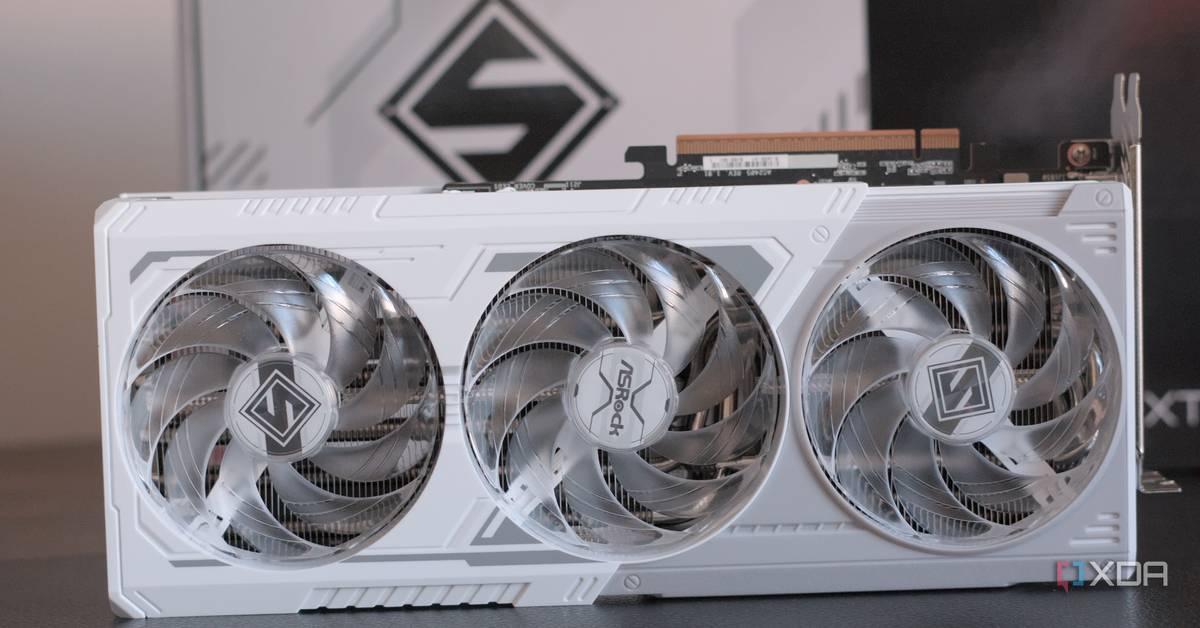Trump's War on Renewables: Impact on Energy Prices and AI Power Demand
5 Sources
5 Sources
[1]
Donald Trump's attacks on renewables sector quash nearly $19bn worth of projects
Donald Trump's attacks on renewable energy have thrown the sector into chaos, prompting industry concerns that the US will struggle to meet surging demand to power the artificial intelligence revolution. Clean energy projects worth $18.6bn have been cancelled this year, compared with just $827mn in 2024, according to Atlas Public Policy's Clean Economy Tracker. Investment announcements fell by nearly 20 per cent to $15.8bn this year, compared to $20.9bn in the same period in 2024. Since retaking office in January, the US president has axed renewable energy tax credits, grants and loans provided by the Biden administration. He has also made it harder to obtain authorisations for wind and solar projects and placed restrictions on companies whose supply chains are dominated by China. Industry watchers say that while demand for energy to power the AI boom will only grow, the US risks irrevocably damaging its renewables sector, which is often the cheapest and fastest source of energy to deploy. "Renewables can be built and connected in a matter of a year or two, in a way that meets data centre developers' timelines," said Advait Arun, an energy policy analyst at the Center for Public Interest. "If you're ignoring renewables, then you're missing a key part of the equation." There have been a wave of renewable energy company bankruptcies amid the cuts. Eleven groups have filed for bankruptcy since the start of the year, according to BankruptcyData, a data aggregator. When wind turbine blade manufacturer TPI Composites filed for bankruptcy on August 11, chief executive William Siwek wrote in filings that the "executive administration of the United States is making a substantial effort to phase out meaningful renewable energy subsidies". A spokesperson from the Department of Energy said that it was "leveraging all forms of energy that are affordable, reliable and secure to ensure the United States is able to win the AI race and reindustrialise". Yet developers are now in a race to break ground on projects that depend on tax credits to be economically viable before the subsidies wind down. The Treasury released stricter rules on August 15 to determine which projects can use tax credits until 2030. The updated guidance requires that projects start physical work such as installing solar racks or building access roads by July 2026. Residential solar has been particularly affected by tax credit cuts -- its incentive will end completely later this year. Energy consultancy Wood Mackenzie said that the policy changes could reduce residential installations by up to 46 per cent through to the end of 2030. According to Aurora Solar chief executive Chris Hopper, tax credit cuts in Trump's "big, beautiful bill" could cause flight from his corner of the industry. "We're going to lose progress, with people leaving the industry and capital and confidence lost," Hopper said. At the state level, more than a third of bills discussed this year on renewable technologies sought to make deployment more difficult, according to data shared exclusively with the FT by Clean Tomorrow, a pro-renewables advocacy group. However, only 5 per cent of the restrictive bills were enacted, due to partisan deadlock and local support for renewables. Utility-scale companies are also facing mounting permitting restrictions and project interference, which has caused delays and driven up costs. In recent weeks interior secretary Doug Burgum announced that wind and solar projects would "undergo elevated review" by his office, which is also investigating eagle deaths caused by wind turbines. In January Trump paused offshore wind and solar leasing on federal lands. But the new announcement could affect projects on private land if they intersect with or share infrastructure with public lands. BloombergNEF predicts that onshore wind additions by 2030 will total 30 gigawatts, down 50 per cent from its base case before the Trump bill. Satellite data from Kayrros, an environmental intelligence company, shows that daily utility solar installations have fallen 44 per cent since Trump was elected. The disruption represents real financial risk to companies. Danish developer Ørsted said this week that the "perceived" risk to the sector had made it impossible to sell or finance its Sunrise Wind project, prompting it to raise $9.4bn in a rights issue. "Without the certainty of permits, it's really hard to get financing and build a project," said Avantus chief executive Cliff Graham. "A lot of banks are concerned because they have a lot of money at risk on these projects." Energy secretary Chris Wright has criticised renewables for being intermittent sources of power, calling them "parasite[s] on the grid". His department has cut $3.7bn of grants, while a further $8.5bn worth of loans have been cancelled or remain at risk. Securing equipment has also been complicated by "foreign entity of concern" provisions in the bill, which penalises the use of materials from companies in adversarial countries. The US imported $13bn of solar cells in 2024 from China, as well as Thailand, Indonesia, Vietnam and Malaysia -- which have become manufacturing hubs for Chinese-owned companies. While battery storage companies have a longer runway to claim tax credits -- until 2036 -- than wind and solar, they were "not spared", said Rob Piconi, chief executive of battery company Energy Vault, since they are vulnerable to import rules due to Chinese dominance of their supply chain. BloombergNEF data suggests that battery storage additions will fall 7 per cent below expectations.
[2]
How Long Will Trump Be Able to Deny Reality with His Energy Policy?
They would not like them on our federal lands (those are reserved for oil and gas, and maybe nuclear reactors). They do not want them on farmland. They will not allow them to float offshore. The Trump Administration's war on wind and solar power just keeps getting more aggressive: late last week, for instance, it announced an investigation into whether it should tariff wind-turbine components arriving from other nations for projects that it had taken office too late to block. As the Times politely put it, "The Trump administration has typically imposed tariffs to protect American companies against foreign competition and spur domestic production of critical products. This time, laying out a path to impose tariffs could be an attempt to stymie an industry." On Friday, it shut down an almost-completed wind farm off the coast of Rhode Island on unspecified (and hard to imagine) "national security" grounds. The Seussian rancor with which every layer of the Administration views clean energy would be almost funny if it weren't so tragically shortsighted. As recently as 2009, Donald Trump joined a handful of other business leaders in signing a full-page ad in the Times urging President Obama to "strengthen" U.S. climate legislation and to "lead the world by example." The ad insisted that "investing in a Clean Energy Economy will drive state-of-the-art technologies that will spur economic growth, create new energy jobs, and increase our energy security, all while reducing the harmful emissions that are putting our planet at risk. We have the ability and know how to lead the world in clean energy technology." The other signatories ran the gamut from Ben and Jerry to Martha Stewart, but only Trump had the rest of his key executives sign on: Don, Jr.; Eric; and Ivanka. But that was before the sight of wind turbines on the horizon at Trump's Scottish golf course wounded him grievously. As he wrote to Scotland's First Minister, in 2011, as his project neared completion, "Unfortunately, instead of celebrating the start of something valuable and beautiful for Scotland, this ugly cloud is hanging over the future of the great Scottish coastline." And it was nearly fifteen years before oil-and-gas executives spent unprecedented sums during an election cycle; nearly half the amount spent during the 2024 cycle went to Republicans, and the rest on lobbying Congress. We're not in Kansas (the fourth-largest wind-producing state) anymore. The greatest irony of this dramatic turnaround is that in 2009 solar and wind power were still expensive; now they are the cheapest forms of energy on offer. And yet the Administration is digging in. The question is: will it be able to hold that position even as electricity prices begin to rise? (On average, they are up ten per cent so far this year.) At the moment, official policy appears to be a complete muddle. The President, on his first day in office in January, declared an "energy emergency" as a way to suspend regulations and allow both increased drilling and the creation of more generating capacity. His team argues that we need far more electricity in order to build data centers that would enable the U.S. to outpace China in the race for "A.I. dominance." As Trump put it in his Day One declaration, "without immediate remedy," America's energy situation "will dramatically deteriorate in the near future due to a high demand for energy and natural resources to power the next generation of technology. The United States' ability to remain at the forefront of technological innovation depends on a reliable supply of energy and the integrity of our Nation's electrical grid." But then came the cascade of decisions designed to restrict the cheapest -- and, just as important, fastest to construct -- sources of new energy supply. Trump's team ignored the pleas of actual data-center operators to keep Biden-era rules on renewable energy, which might have let them build what they needed right away. We are, to use a metaphor from the internal-combustion era, stamping on the gas and the brakes at the same time. Though Economics 101 would seem to indicate that cutting off the easiest source of new supply while demand is simultaneously rising would inevitably cause prices to climb, the Trump Administration has been rejecting this argument in favor of telling whoppers. Last Wednesday, the President took to Truth Social to insist that "STUPID AND UGLY WINDMILLS ARE KILLING NEW JERSEY. Energy prices up 28% this year, and not enough electricity to take care of state. STOP THE WINDMILLS!" In point of fact, though, the windmills planned for off the Jersey shore have been cancelled, thanks to the Administration. The entire state currently has just six wind turbines, generating nine megawatts of power, which, as the American Clean Power Association points out, is 0.03 per cent of the state's energy production. Whatever is driving up electricity prices, it isn't wind -- in fact, the states with high levels of wind power, including the very red states of North and South Dakota, Wyoming, and Oklahoma, have some of the lowest electric rates in the country. The Administration's bet seems to be that it can hold back renewable power in this country indefinitely -- and perhaps it can. But even here its reach is somewhat limited: Texas, with very little in the way of public lands, continues to lead the nation in installing new clean energy. And, outside our borders, the sun rush continues unabated, which matters because Trump, in his energy-emergency directive, also called on the U. S. to export more fuel, in order to "create jobs and economic prosperity for Americans forgotten in the present economy, improve the United States' trade balance, help our country compete with hostile foreign powers, strengthen relations with allies and partners, and support international peace and security." That may be a tall order. We learned last month that China installed two hundred and twelve gigawatts of new solar power in the first six months of the year, compared with twelve in the U.S.; as a result, its carbon emissions have begun to fall, even as its economy keeps growing. (America's emissions, in contrast, rose sharply over the same period.) And other nations are following China's lead: Indonesia, the fourth most populous country, announced plans last week for a hundred gigawatts of solar over the next five years. Why? Because it's so much cheaper than running the diesel generators that currently supply much of that country's rural electricity. "The estimated levelized cost of electricity (L.C.O.E.) for this system is about $0.12 to $0.15/kWh over the next 25 years, compared to $0.20 to $0.40/kWh for a diesel generator," the head of a Jakarta-based energy-transition think tank told PV magazine. Numbers like that have convinced the International Energy Agency that peak consumption of oil on this planet can't be far off; the Trump Administration's response has been, as in other cases, to try to play with the data. It is currently pressuring the I.E.A. (set up by that environmental radical Henry Kissinger in the nineteen-seventies in response to the OPEC oil-price shocks) to fire one of its top officials and replace her with someone who will parrot the White House line that demand for fossil fuels will keep climbing for decades. "They want to get operatives in there, whether they're career or political, who can actually move the needle," an unidentified lobbyist told Politico. "They're going to get someone they trust and that person is going to fight from the inside out." You can only get away with that kind of maneuvering for a while, however, and the Administration's license may be running out. One fascinating indicator: the world's hedge funds seem to be placing their bets on solar. Since Liberation Day, Bloomberg reported earlier this month, the main index of renewable funds had risen eighteen per cent, while oil-and-gas shares had fallen four per cent. "If we are going to continue to grow both in developed and emerging economies, we're going to need a lot of energy," one analyst explained. "A big chunk of the marginal growth in energy over the last 10 years has come from renewables and it's hard to see why that isn't going to continue."
[3]
Trump declares war on clean energy. The numbers show it's the only thing keeping America's lights affordable
With electricity prices rising at more than twice the rate of inflation, President Donald Trump has lashed out at renewable energy sources such as wind and solar power, blaming them for skyrocketing energy costs. Trump called wind and solar power "THE SCAM OF THE CENTURY!" in a social media post and vowed not to approve wind or "farmer destroying Solar" projects. "The days of stupidity are over in the USA!!!" he wrote on his Truth Social site. Energy analysts say renewable sources have little to do with recent price hikes, which are based on increased demand, aging infrastructure and increasingly extreme weather events such as wildfires that are exacerbated by climate change. The rapid growth of cloud computing and artificial intelligence has fueled demand for energy-hungry data centers that need power to run servers, storage systems, networking equipment and cooling systems. Increased use of electric vehicles also has boosted demand, even as the Trump administration and congressional Republicans move to restrict tax credits and other incentives for EV purchases approved under the Biden administration. Natural gas prices, meanwhile, are rising sharply amid increased exports to Europe and other international customers. More than 40% of U.S. electricity is generated by natural gas. Trump promised during the 2024 campaign to lower Americans' electric bills by 50%. Democrats have been quick to blame him for the price hikes, citing actions to hamstring clean energy in the sprawling tax-and-spending cut bill approved last month, as well as regulations since then to further restrict wind and solar power. "Now more than ever, we need more energy, not less, to meet our increased energy demand and power our grid. Instead of increasing our energy supply Donald Trump is taking a sledgehammer to the clean energy sector, killing jobs and projects," said New Mexico Sen. Martin Heinrich, the top Democrat on the Senate Energy and Natural Resources Committee. The GOP bill will cost thousands of jobs and impose higher energy costs nationwide, Heinrich and other critics said. A report from Energy Innovation, a non-partisan think tank, found the GOP tax law will increase the average family's energy bill by $130 annually by 2030. "By quickly phasing out technology-neutral clean energy tax credits and adding complex material sourcing requirements," the tax law will "significantly hamper the development of domestic electricity generation capacity," the report said. "The real scam is blaming solar for fossil fuel price spikes," the Solar Energy Industries Association said in response to Trump's post. "Farmers, families, and businesses choose solar to save money, preserve land, and escape high costs of the old, dirty fuels being forced on them by this administration," the group added. As technology improves, wind and solar offer some of the cheapest and fastest ways to provide electric power. More than 90% of new energy capacity that came online in the U.S. in 2024 was clean energy, said Jason Grumet, CEO of the American Clean Power Association, another industry group. States with the highest share of clean energy production have seen prices decline in the past year, according to data from the U.S. Energy Information Administration, while prices have gone up in states with the least renewable energy use. "By slowing clean energy deployment, the Trump administration is directly fueling cost increases," Grumet said "Blocking cheap, clean energy while doubling down on outdated fossil fuels makes no economic or environmental sense," added Ted Kelly, director of U.S. clean energy for the Environmental Defense Fund, a nonprofit advocacy group. Energy Secretary Chris Wright blamed rising prices on "momentum" from Biden-era policies that backed renewable power over fossil fuel sources such as oil, coal and natural gas. "That momentum is pushing prices up right now. And who's going to get blamed for it? We're going to get blamed because we're in office," Wright told POLITICO during a visit to Iowa last week. About 60 percent of the state's electricity comes from wind. Not all the pushback comes from Democrats. Iowa Sen. Chuck Grassley, a Republican who backs wind power, has placed a hold on three Treasury nominees to ensure wind and solar have "an appropriate glidepath for the orderly phase-out of the tax credits" approved in the 2022 climate law under former President Joe Biden. Grassley said he was encouraged by new Treasury guidance that limits tax credits for wind and solar projects but does not eliminate them. The guidance "seems to offer a viable path forward for the wind and solar industries to continue to meet increased energy demand," Grassley said in a statement. John Quigley, senior fellow at the Kleinman Center for Energy Policy at the University of Pennsylvania, said the Republican tax law will increase U.S. power bills by slowing construction of solar, wind, and battery projects and could eliminate as many as 45,000 jobs by 2030. Trump administration polices that emphasize fossil fuels are "an extremely backward force in this conversation," Quigley said. "Besides ceding the clean energy future to other nations, we are paying for fossil foolishness with more than money -- with our health and with our safety. And our children will pay an even higher price."
[4]
Trump's war on wind, solar rattles clean energy industry
The Trump administration's rollback of clean energy initiatives and focus on expanding U.S. domination of natural gas exports is set to transform U.S. and global energy markets for decades to come. Some experts warn U.S. divestment from clean energy risks increasing consumer prices, slowing down innovation and ultimately undermining competitiveness in key industries. These worries are exacerbated by predictions that energy usage and prices are expected to skyrocket in the coming years. "If you are concerned about resource adequacy for meeting growth in electricity demand, you want all hands on deck, right?" said Jon Elkins, a senior research scholar at the Center on Global Energy Policy. "You would want all technologies to be part of the solution set, and the technologies that can be built out the fastest ... are wind and solar and batteries." President Trump, however, has taken a different approach. "Any State that has built and relied on WINDMILLS and SOLAR for power are seeing RECORD BREAKING INCREASES IN ELECTRICITY AND ENERGY COSTS. THE SCAM OF THE CENTURY!" he wrote on Truth Social on Wednesday. "We will not approve wind or farmer destroying Solar. The days of stupidity are over in the USA!!!" Since his return to the White House, Trump has aimed to increase the production and exports of fossil fuels such as liquefied natural gas (LNG), and to boost nuclear and geothermal energy to surge supply. His landmark budget bill enacted major cuts in the growing clean energy sector, especially in wind and solar energy, by phasing out green energy subsidies implemented by former President Biden's Inflation Reduction Act (IRA). For Elkins, who was also an Obama-era assistant secretary for international affairs at the Energy Department, Trump's efforts to "unleash" American energy are incomplete without renewables. "What is certainly at stake is the role that the U.S. carves out for itself in the future and in a world of rapid changes in energy technology," he said. "Do we want a position in the U.S. to be an innovator, a market maker, a market leader, a solution provider or a laggard?" "Because right now, the actions that have been taken by the Trump administration are really ambiguous," Elkins added. Changing the energy mix The renewable energy industry accounted for just more than 20 percent of the U.S.'s energy production in 2023. Under Biden's IRA, about 40 percent of the country's electricity was expected to come from renewable energy sources by 2030, according to the American Clean Power Association. But with Trump's reversal, the share of clean energy contributions to the U.S. energy grid are projected to shrink anywhere between 57 and 62 percent in the next five to 10 years, per the Rhodium Group, an independent research organization. As part of his energy plan, Trump ended Biden's 2024 pause on natural gas exports. The prior administration halted LNG exports and projects in its efforts to kick-start a transition to clean energy. "In stark contrast to Biden's ban on LNG exports, President Trump is leveraging every tool of government to boost natural gas production and LNG exports," White House spokesperson Harrison Fields told The Hill. "This stands as a major priority and success for President Trump, as we've already witnessed significant demand and interest from our trading partners for more American LNG," he added. The Council of Economic Advisors calculated that the country's gross domestic product could rise by an additional 0.56 to 1.90 percent annually by 2035, thanks to Trump's move to restart exports. Still, energy security experts warn a less diverse energy mix has wide-ranging consequences. A July report from SAFE, a nonpartisan energy security think tank, and the Energy Security Leadership Council argues a diversified domestic industry will allow the U.S. to curtail its reliance on foreign countries for oil and other energy sources. The report argues that a "shift to new technologies" is "critical to national security, as dependence on a volatile and manipulated oil market constrains U.S. foreign policymaking and affects the flexibility and activities of the military." "Unlike fossil fuels, renewables do not require fuel inputs, making them immune to price volatility," it reads. The American Petroleum Institute, the biggest oil and natural gas lobbying group, argued that clean energy and the president's emphasis on LNG can be complementary. "Natural gas has such an important role to play in reliability for the power grid here in the U.S. for energy security. It is also a natural complement to supporting renewables on the grid," said Rachel Fox, the institute's director of policy, economics and regulatory affairs. "We do want to see natural gas play a role pretty much everywhere where it can, given that we can produce it abundantly, at low cost, and we can export it abroad to support international energy security," she added. Skyrocketing electricity demand Rising prices are a critical point of concern for American consumers, as electricity consumption is expected to reach an all-time high and skyrocket in the coming years. By 2040, demand is slated to increase anywhere from 35 to 50 percent, according to American Clean Power. At the end of July, electricity prices were 5.5 percent higher on average than the same month the previous year. One reason for that increase is the expansion of energy-intensive industries, such as data centers and artificial intelligence, which the administration has invested heavily in. "We all agree in Washington that we expect there to be growing demand for electricity," Avery Ash, SAFE's senior vice president, told The Hill. "The only immediate solutions are the sorts of renewable energy such as wind and solar that are both quick to deploy and already in the interconnection queue." Democrats on Capitol Hill this month railed against the administration's renewables rollback, slamming Trump over high energy prices. "While energy demand surges, your policies are strangling America's cheapest and quickest-to-deploy sources of energy -- solar and wind -- by hiking costs, creating insurmountable permitting hurdles and injecting uncertainty into the market," a group of senators wrote. Fox disagrees. She argued that natural gas "has the best chance of meeting the type of demand that we're going to see coming in the next decade," acknowledging growing demand and rising energy prices. Still, Elkins said de-emphasizing renewables makes "the whole job harder." "We are making it harder to help hyperscalers develop capacity for artificial intelligence and other data centers here in the U.S. We're making it harder to avoid household electricity cost increases," Elkins added. "We're making it harder to do other new manufacturing that is happening across the U.S." Rollbacks risk U.S. competitiveness Wayne Gray, a professor of economics at Clark University, told The Hill that U.S. companies have less of an incentive to develop new clean energy products because of Trump's policies, and are likely to fall behind on the global stage. "That leaves the door open, whether that's to European firms or to Chinese firms, to leapfrog a bit ahead and then potentially be in a position to have much more control over those markets," he said. The administration's move to gut offshore wind projects -- a booming market -- has downstream effects on other critical industries, including shipping and steel, according to Elkins. "The question on the table now is what are the industries of the future, and where do we see ourselves going? What are going to be the sources of U.S. economic competitiveness going forward, the sources of U.S. job creation going forward?" he asked. Still, some private companies have doubled down on the emerging renewable market. Ford Motor Co., for example, plans to invest nearly $2 billion to develop more affordable midsize electric vehicles (EVs) after Trump's spending law nixed EV tax credits. "And this new vehicle built in Louisville, Kentucky, is going to be a much better solution to anything that anyone can buy from China," Ford CEO James Farley said. Even if the private sector continues to invest in clean energy technology, Ash worries that if there is not enough electricity to meet demand, sectors such as artificial intelligence or EVs will confront hurdles. "The real question is not how do we meet the power needs of today, but how we meet the energy power needs of tomorrow," said Ash. If the U.S. does not meet those needs, he added, "It'll be very hard for us to compete globally, when we think of all the industries the U.S. wants to be a leader on going forward, the U.S. will not be competitive."
[5]
Trump vows US ban on wind and solar projects as energy bills soar:...
President Donald Trump declared war on renewable energy Tuesday, vowing the federal government will block new wind and solar projects while electricity bills across America skyrocket at twice the rate of inflation. "Any State that has built and relied on WINDMILLS and SOLAR for power are seeing RECORD BREAKING INCREASES IN ELECTRICITY AND ENERGY COSTS. THE SCAM OF THE CENTURY!" Trump wrote in a Truth Social post. "We will not approve wind or farmer destroying Solar. The days of stupidity are over in the USA!!! MAGA". The fiery proclamation comes as American households face brutal electricity price hikes. So far this year, electricity prices have risen between 5% and 9% -- with some states and metro areas facing even higher increases. Maine residents saw bills explode 36.3% higher, while Connecticut ratepayers absorbed an 18.4% spike and Utah families faced a 15.2% increases. The Energy Information Administration forecasts electricity prices will climb 13% from 2022 to 2025 -- the fastest pace in decades. The average American household's annual bill is expected to rise by about $219 in 2025 versus 2022, to around $1,900/year. Surging electricity demand from AI and data centers is a key driver behind soaring bills, along with aging grid infrastructure that utilities are modernizing and passing costs to consumers. Rising natural gas prices -- used for power generation -- add more upward pressure on rates. Trump's renewable energy crackdown has already delivered devastating blows to the industry. On July 4, he signed into law the "One Big Beautiful Bill" that kills the popular 30% federal solar tax credit for homeowners. The newly enacted law gives Americans just months to install residential solar systems before losing thousands in tax breaks. His administration also froze the $7 billion Solar for All program, a Biden-era initiative that sought to make solar power accessible to low-income Americans. Trump also slammed the brakes on new wind and solar permits on federal land. Offshore wind leasing got the axe entirely. Trump's Commerce Department escalated the renewable energy offensive in August by extending and increasing tariffs on wind turbines and components. Wind turbines now face a punishing 50% tariff rate across 407 new categories. The administration has also imposed strict new permitting requirements for wind farms, causing delays, permit freezes and outright project cancellations. High-profile casualties include Idaho's Lava Ridge Wind Project and New Jersey's Atlantic Shores development. Projects that already received approval can still be reviewed or revoked under the new rules. Trump consistently brands wind and solar as "expensive" and "unreliable," arguing government subsidies burden taxpayers and drive up energy costs. But the renewable energy industry warns these policy reversals threaten thousands of jobs and could slow clean energy growth just as demand explodes from data centers, electric vehicles and artificial intelligence.
Share
Share
Copy Link
President Trump's policies against renewable energy are causing chaos in the sector, raising concerns about meeting the surging energy demand for AI and data centers. This comes as electricity prices soar across the US.
Trump's Renewable Energy Crackdown
President Donald Trump has launched a significant offensive against renewable energy sources, particularly wind and solar power. His administration has implemented policies that have effectively quashed nearly $19 billion worth of clean energy projects since the beginning of the year
1
. This dramatic shift in energy policy has sent shockwaves through the renewable sector, raising concerns about the United States' ability to meet the surging demand for power, especially in light of the growing artificial intelligence (AI) industry.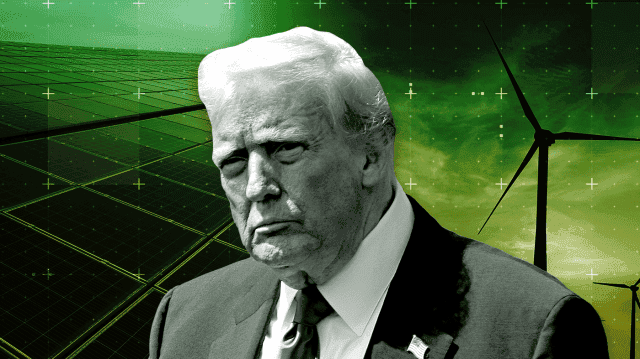
Source: The Hill
Impact on Renewable Energy Sector
The renewable energy industry has been hit hard by Trump's policies. Clean energy projects worth $18.6 billion have been cancelled this year, compared to just $827 million in 2024
1
. Investment announcements in the sector have fallen by nearly 20% to $15.8 billion this year, down from $20.9 billion in the same period last year1
. The administration has axed renewable energy tax credits, grants, and loans provided by the previous Biden administration, making it more challenging to obtain authorizations for wind and solar projects1
.Rising Electricity Prices
As the renewable sector struggles, electricity prices across the United States are soaring. Prices have risen between 5% and 9% so far this year, with some states experiencing even more significant increases
5
. For instance:- Maine residents saw bills increase by 36.3%
- Connecticut ratepayers absorbed an 18.4% spike
- Utah families faced a 15.2% increase
5
The Energy Information Administration forecasts that electricity prices will climb 13% from 2022 to 2025, the fastest pace in decades
5
.AI and Data Center Power Demand
The timing of these policy changes is particularly concerning given the increasing energy demands of the AI industry and data centers. Industry watchers argue that demand for energy to power the AI boom will only grow, and the US risks damaging its renewables sector, which is often the cheapest and fastest source of energy to deploy
1
. As Advait Arun, an energy policy analyst at the Center for Public Interest, notes, "Renewables can be built and connected in a matter of a year or two, in a way that meets data centre developers' timelines"1
.Related Stories
Trump's Energy Policy Rationale
The Trump administration argues that the country needs far more electricity to build data centers that would enable the US to outpace China in the race for "AI dominance"
2
. However, critics point out that by restricting the cheapest and fastest sources of new energy supply, the administration is effectively "stamping on the gas and the brakes at the same time"2
.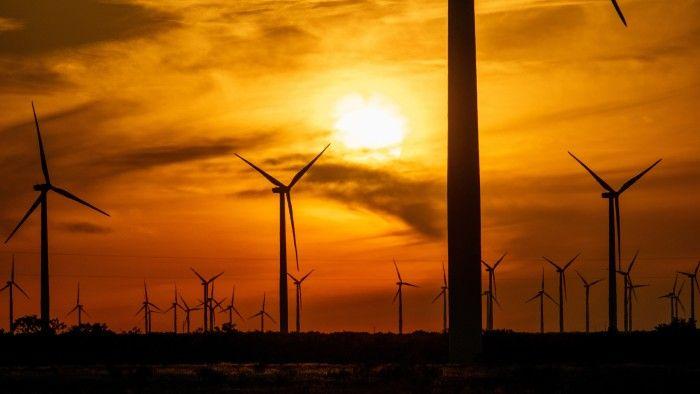
Source: FT
Industry Response and Concerns
The renewable energy industry has pushed back against Trump's policies. The Solar Energy Industries Association stated, "The real scam is blaming solar for fossil fuel price spikes"
3
. Jason Grumet, CEO of the American Clean Power Association, pointed out that more than 90% of new energy capacity that came online in the US in 2024 was clean energy3
.Energy experts warn that the administration's policies could have long-lasting negative impacts. John Quigley, senior fellow at the Kleinman Center for Energy Policy at the University of Pennsylvania, suggested that the Republican tax law will increase US power bills by slowing construction of solar, wind, and battery projects and could eliminate as many as 45,000 jobs by 2030
3
.As the debate continues, the future of America's energy landscape and its ability to meet the growing demands of the AI revolution hang in the balance.
References
Summarized by
Navi
Related Stories
Senate Bill Threatens Clean Energy Future, Raising Concerns for AI Industry's Power Needs
29 Jun 2025•Policy and Regulation

Trump's Clean Energy Subsidy Cuts Threaten US Renewable Projects and AI Industry Growth
24 Jul 2025•Policy and Regulation
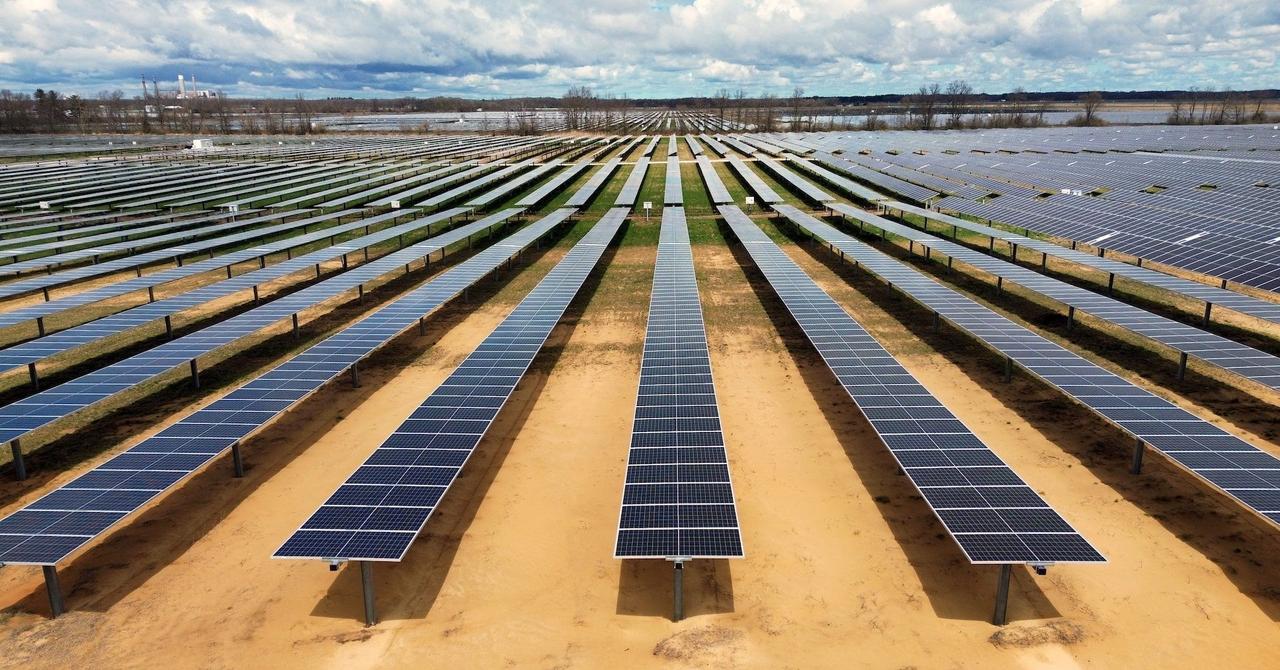
Trump's Renewable Energy Crackdown Threatens US AI Dominance, Data Center Industry Warns
07 May 2025•Policy and Regulation
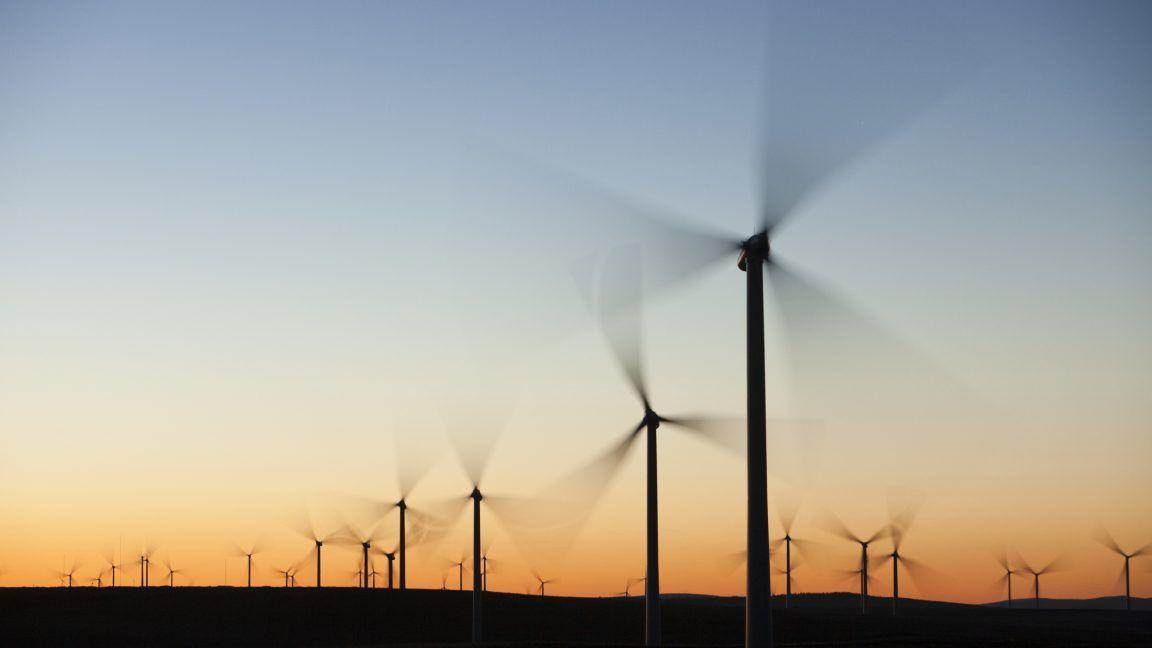
Recent Highlights
1
AI Chatbots Sway Voters More Effectively Than Traditional Political Ads, New Studies Reveal
Science and Research

2
Google AI glasses set to launch in 2026 with Gemini and Android XR across multiple partners
Technology

3
EU Launches Antitrust Probe Into Google's AI Training Practices and Content Usage
Policy and Regulation




